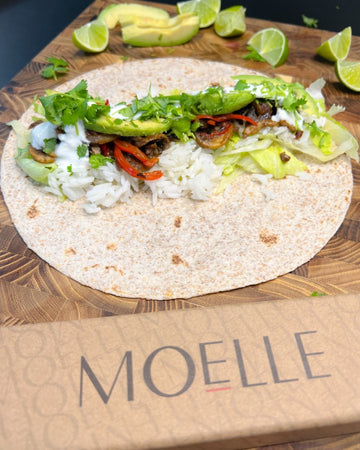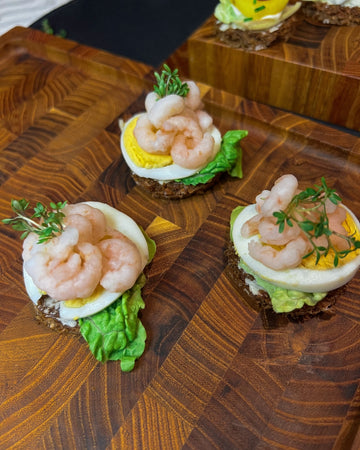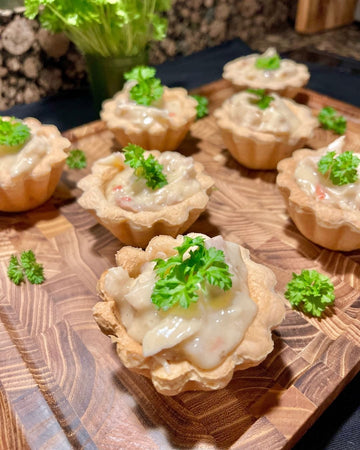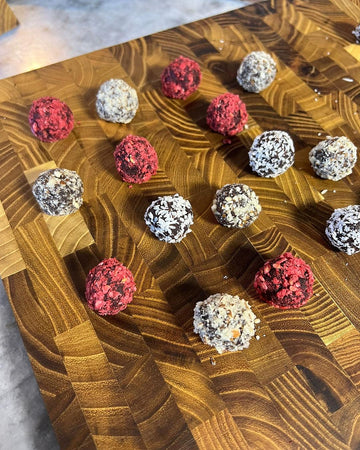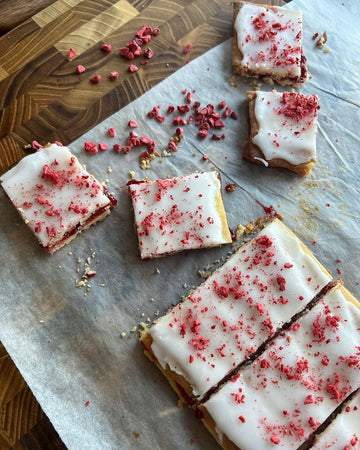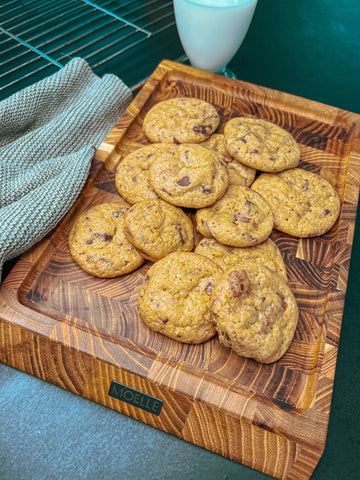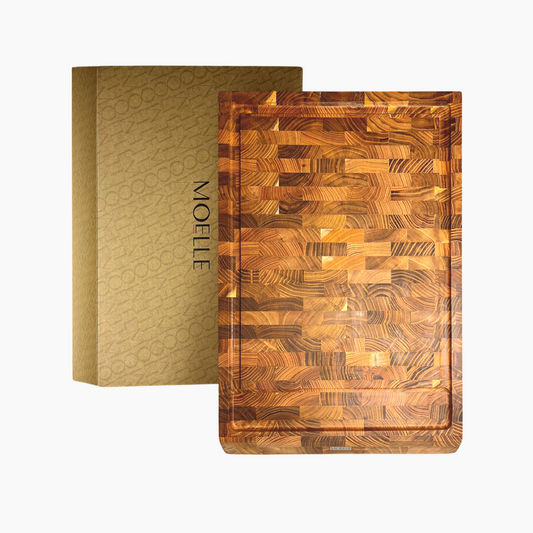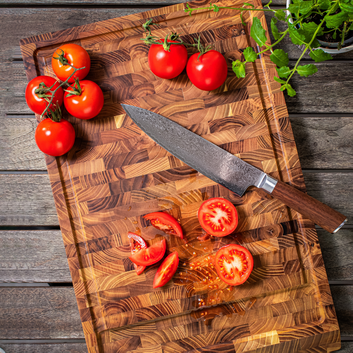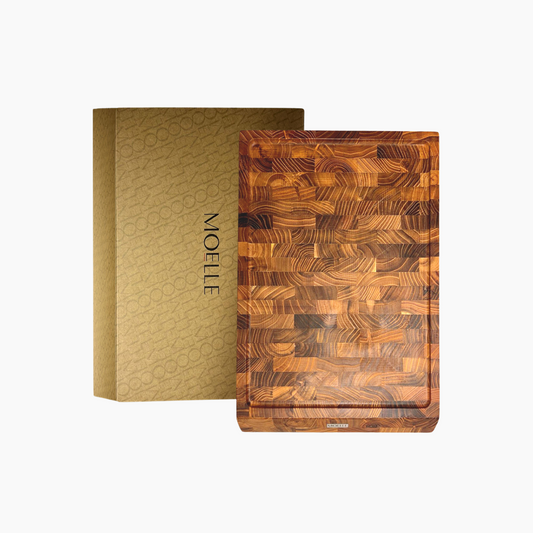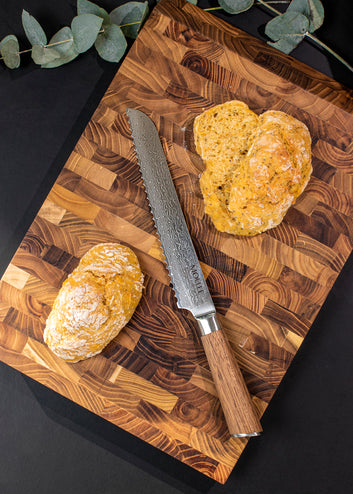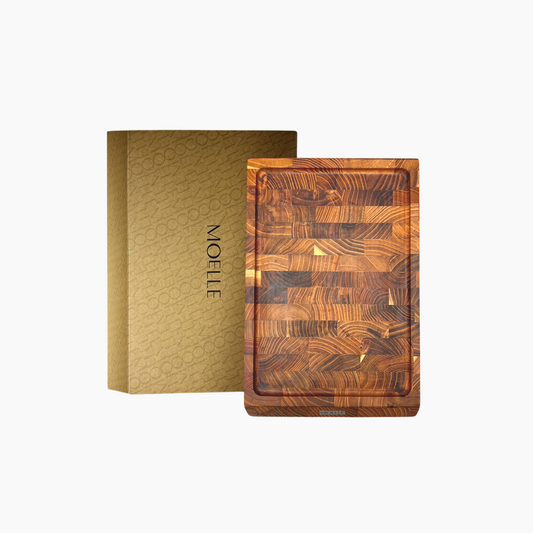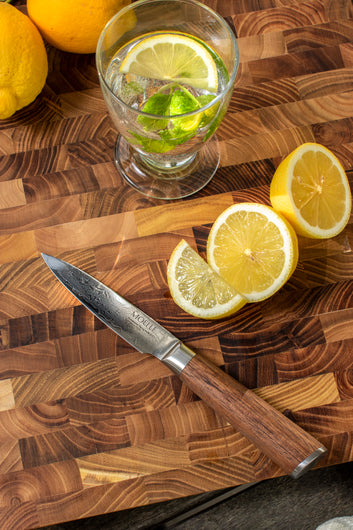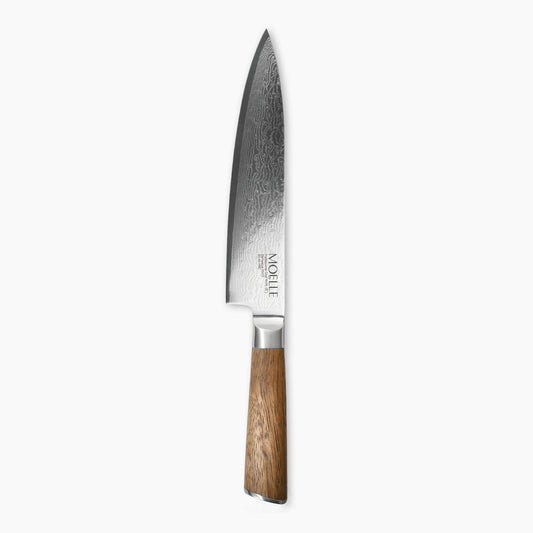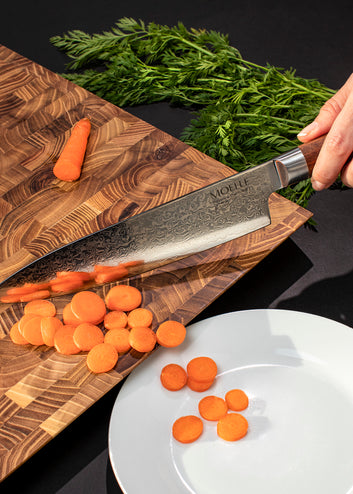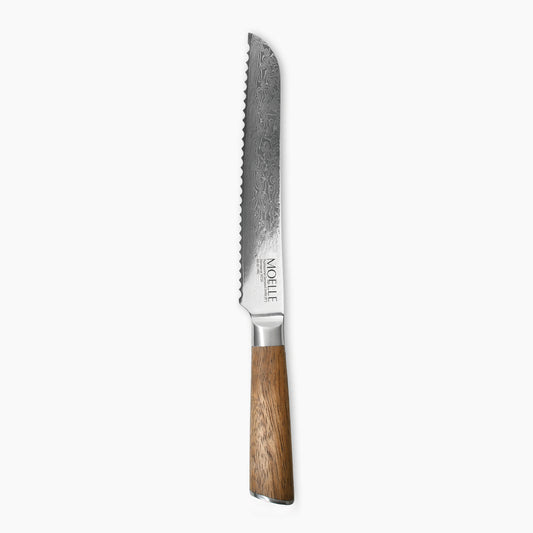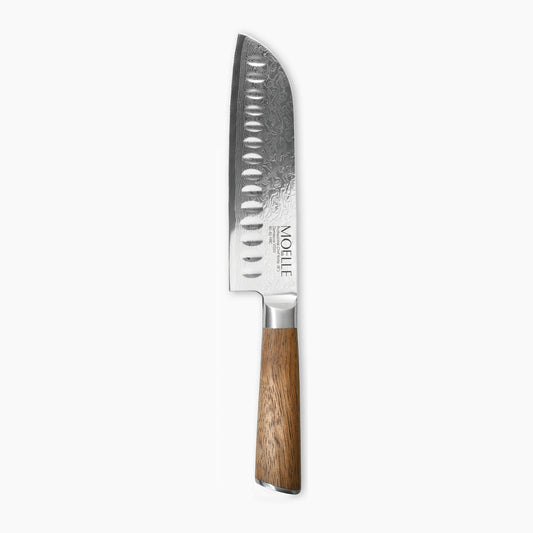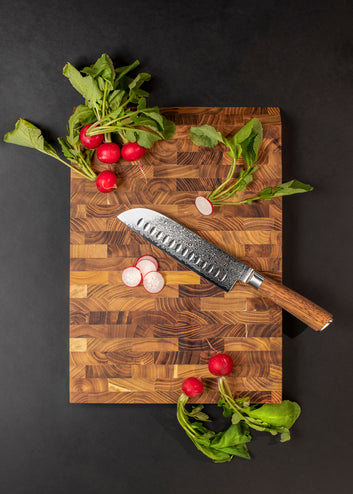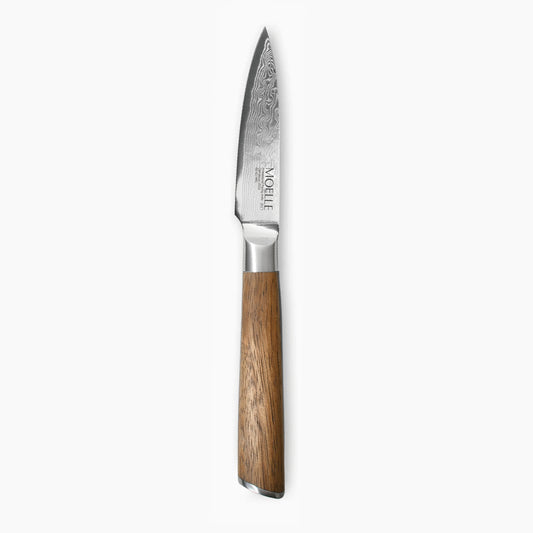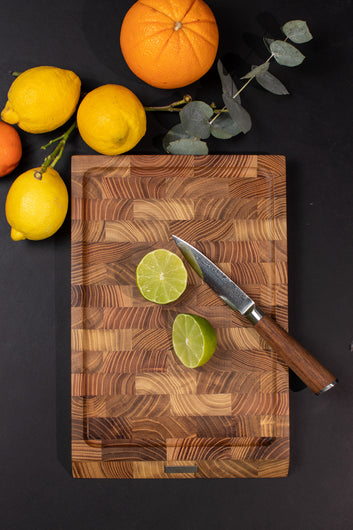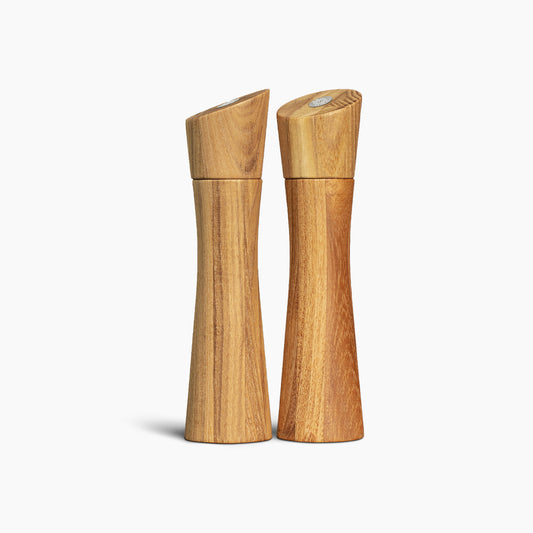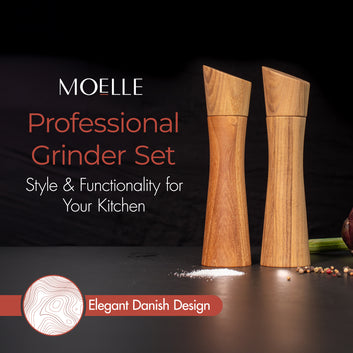Wood vs. Plastic: Here is what you need to know
In the realm of culinary tools, one timeless debate continues to simmer:
wooden cutting boards versus their plastic counterparts. While both serve a similar purpose, the wooden cutting board emerges as the reigning champion for numerous reasons. In this blog, we unravel the benefits of opting for a wooden cutting board and address some frequently asked questions to help you make an informed choice for your kitchen.

The Natural Appeal of Wooden Cutting Boards Why Wooden Takes the Crown
Knife-Friendly Surface
Wooden cutting boards are gentle on your knives, helping to maintain their sharpness over time. The natural give of wood ensures your knife edges remain intact, making for a longer-lasting and efficient tool.
Bacterial Resistance
Wood possesses natural antimicrobial properties that help fight off harmful bacteria. Studies have shown that wooden cutting boards can be more resistant to bacteria growth compared to plastic boards, especially when properly cared for.
Aesthetic Elegance
Beyond functionality, wooden cutting boards bring a rustic charm to your kitchen. The warmth and character of wood add a touch of elegance to your culinary space, elevating both your cooking and your kitchen's aesthetics.
Eco-Friendly Choice
Wood is a renewable resource, making wooden cutting boards a more environmentally friendly option than their plastic counterparts. Choosing wood over plastic contributes to sustainable kitchen practices.
Durability and Longevity
Well-maintained wooden cutting boards can last for years, with their natural sturdiness withstanding the test of time. Over time, they develop a patina that tells the story of countless meals prepared with love.
Plastic Cutting Boards

Dishwasher Safe
Most plastic cutting boards are dishwasher safe, making cleanup a breeze.
Variety of Colors and Sizes
Plastic boards come in an array of colors and sizes, allowing you to designate specific boards for different types of foods.
Cheap
Plastic cutting boards are generally more budget-friendly than wooden counterparts.
FAQs about Wooden vs. Plastic Cutting Boards

Which material is better for preventing bacteria growth?
Wooden cutting boards, particularly those made from hardwood like maple, offer natural antimicrobial properties that can help inhibit bacteria growth.
Are plastic cutting boards truly dishwasher-safe?
Yes, plastic cutting boards can generally be safely washed in the dishwasher, ensuring thorough sanitation.
Can wooden cutting boards damage knives?
No, wooden cutting boards are knife-friendly and less likely to dull your knives compared to harder surfaces like glass.
How do I maintain a wooden cutting board's longevity?
Regularly oil your wooden cutting board with food-safe mineral oil to prevent drying and cracking. Avoid soaking it in water and never put it in the dishwasher.
Conclusion
In a world of kitchen gadgets, the wooden cutting board stands as a timeless essential, offering not only functionality but also a connection to culinary heritage. From its natural charm to its exceptional durability, wooden cutting boards bring a touch of authenticity to your cooking journey. So, whether you're a professional chef or a home cook, consider welcoming the artistry of wooden cutting boards into your kitchen – a decision that bridges tradition with modern convenience.




